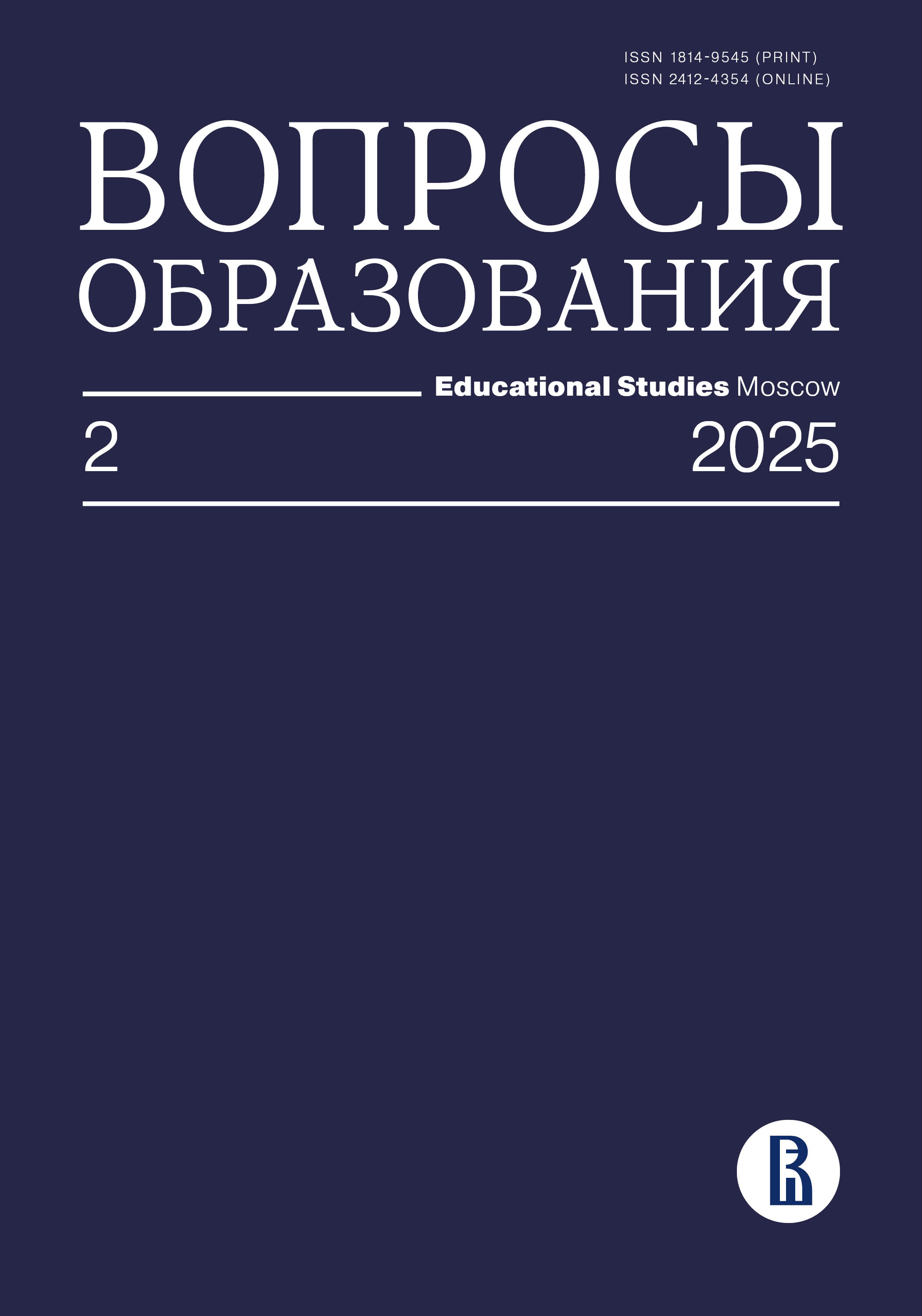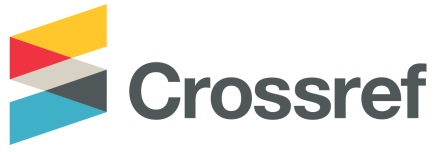Tell Me Who Your Friends Are. The Connection between Communities and Teen Social Activity
Abstract
The article describes a study indended to assess the relationship between adolescents’ participation in formal, subcultural and virtual peer communities and their manifestation of social activity in the context of a modern digital society. The empirical basis of the study consists of the data obtained during an online survey of 6,183 adolescents in the Chelyabinsk region. The survey was conducted using the “Socially-Oriented Activity” questionnaire and the author’s questionnaire specifically developed to evaluate adolescents’ inclusion in the above mentioned communities.
The social activity level of 68.1% of the teenagers in the sample was assessed as average, 16.1% as high, and 15.8% as low. 52% of respondents are involved in formal communities, 81.3% participate in subcultural communities, and 89.2% are members of virtual communities. The most popular communities among teenagers proved to be entertaining (54.9%) and educational ones (40.7%), virtual, or the “gamers”, subculture (35.2%), and the formal community “Movement of the First” (30.4%).
The authors draw an inference that a teenager is socially active in a certain network of communities, which he constructs independently and sees it as an opportunity to be useful to society and advance in personal development. The most socially active teenagers are those included in formal communities and the “volunteer” subculture. Adolescents who represent members of the “gamers” and “anime fans” subcultures have lower social activity than those not involved in these subcultures. In conclusion, the authors suggest areas of pedagogical support for teenagers in constructing a network of communities.
Downloads
References
Abramenkova V.V. (2008) Teenage Subculture as the Space of the Self-Realizationa. World of Psychology, no 1, pp. 175–189 (In Russian).
Abulkhanova K.A. (2016) The Worldview Meaning and the Value of the Category of Subject. The Bulletin of KSPU named after V.P. Astafyev, no 4 (38), pp. 162–168 (In Russian).
Adler R.P., Goggin J. (2005) What Do We Mean By “Civic Engagement”? Journal of Transformative Education, vol. 3, no 3, pp. 236–253. https://doi.org/10.1177/1541344605276792
Albanesi C., Cicognani E., Zani B. (2007) Sense of Community, Civic Engagement and Social Well‐Being in Italian Adolescents. Journal of Community & Applied Social Psychology, vol. 17, no 5, pp. 387–406. https://doi.org/10.1002/casp.903
Ambarova P/A., Zborovskiy G.E. (2017) The Time of Social Community. Yekaterinburg: University of the Humanities (In Russian).
Andramonova I.M. (1999) The Main Directions of Studying the Problem of Formation of Students Social Activity (1960–1985). Yaroslavl Pedagogical Bulletin, no 1–2, pp. 97–101 (In Russian).
Armstrong‐Carter E., Telzer E.H. (2021) Advancing Measurement and Research on Youths’ Prosocial Behavior in the Digital Age. Child Development Perspectives, vol. 15, no 1, pp. 3136. https://doi.org/ 10.1111/cdep.12396
Avdeeva S.M., Uvarov A.Yu., Tarasova K.V. (2022) Digital Transformation of Schools and Student’s Information and Communication Literacy. Voprosy obrazovaniya / Educational Studies Moscow, no 1, pp. 218–243 (In Russian). https://doi.org/10.17323/1814-9545-2022-1-218-243
Azashikov G.H., Khagurova N.E. (2015) Growing up as a Part of Teenage Communities: Current Trends and Risks. Bulletin RUDN. Series: Sociology, no 1, pp. 54–64 (In Russian).
Belyaev G.Yu. (2015) Youth Subcultures and Informal Communities in the Sphere of Social Contact and Communication with Educational Institutions. Science and World, no 5–2, pp. 51–62 (In Russian).
Bocharova E.E. (2019) Typical Spheres of Social Activity Manifestation in Modern Youth. RUDN Journal of Psychology and Pedagogics, vol. 16, no 3, pp. 359–376 (In Russian). https://doi.org/10.22363/2313-1683-2019-16-3-359-376
Brownell C.A. (2013) Early Development of Prosocial Behavior: Current Perspectives. Infancy, vol. 18, no 1, pp. 1–9. https://doi.org/10.1111/infa.12004
Crocetti E., Jahromi P., Meeus W. (2012) Identity and Civic Engagement in Adolescence. Journal of Adolescence, vol. 35, no 3, pp. 521–532. https://doi.org/10.1016/j.adolescence.2011.08.003
Do K.A., Parra G.R., Kim S., Pillai S., Choi E., de Guzman M.R.T. (2024) Youth Civic Engagement: A Global Perspective. Global Perspectives on Adolescents and Their Families (eds Y.R. Xia, M.R.T. de Guzman, R. Esteinou, C.S. Hollist), Cham: Springer International, pp. 115–134. https://doi.org/10.1007/978-3-031-49230-3_6
Earl J., Maher T.V., Elliott T. (2017) Youth, Activism, and Social Movements. Sociology Compass, vol. 11, no 4, Article no e12465. https://doi.org/10.1111/soc4.12465
Eliseev O.P. (2014) The Constructive Path of Neoclassical Science. Proceedings of the V International Scientific Conference "L.S. Vygotsky and Modern Cultural and Historical Psychology: Problems of Personality Development in a Changing World" (Gomel, 2014, 5–6 July). Gomel: Gomel State University named after F. Skorina, pp. 18–21 (In Russian).
Farafonova L.N. (2008) Conditions of Education of Teenager Social Activity in the Activity of Children Public Organizations (on the Example of the Pioneer Organization of 60-80th Years of XX Century). Pedagogičeskoe obrazovanie i nauka / Pedagogical Education and Science, no 1, pp. 69–73 (In Russian).
Feldstein D.I. (2012) Modern Childhood as a Socio-Cultural and Psychological Phenomenon. Universum: Bulletin of the Herzen University, no 1, pp. 20–29 (In Russian).
Filipova A.G., Bukhtiyarova I.N., Skrypnikova E.M (2023) Social Activity of Children and Public Organisations: Resources, Limitations and Opportunities for Participation. Vestnik of Kostroma State University. Series: Pedagogy. Psychology. Sociokinetics, vol. 29, no 1, pp. 147–155 (In Russian). https://doi.org/10.34216/2073-1426-2023-29-1-147-155
Flanagan C.A. (2004) Volunteerism, Leadership, Political Socialization, and Civic Engagement. Handbook of Adolescent Psychology (eds R.M. Lerner, L. Steinberg), Hoboken, NJ: John Wiley & Sons, pp. 721–745. https://doi.org/10.1002/9780471726746.ch23
Frishman I.I. (2018) The Social Activity of the Younger Generation and the Management of the Activities of Children's Public Associations: The Dialectic of Development. Socio-Pedagogical Activity in the Education System. Yaroslavl: Yaroslavl State Pedagogical University named after K.D. Ushinsky, pp. 221–236 (In Russian).
Fuligni A.J. (2019) The Need to Contribute during Adolescence. Perspectives on Psychological Science, vol. 14, no 3, pp. 331–343. https://doi.org/10.1177/1745691618805437
Fullam J. (2017) Becoming a Youth Activist in the Internet Age: A Case Study on Social Media Activism and Identity Development. International Journal of Qualitative Studies in Education, vol. 30, no 4, pp. 406–422. https://doi.org/10.1080/09518398.2016.1250176
Genova N.M., Steblyak V.V., Pishchagina Yu.A. (2023) Studies of Subcultural Associations of Youth in Modern Russia. Culture and Сivilization, vol. 13, no 3A-4А, pp. 15–22 (In Russian). https://doi.org/10.34670/AR.2023.82.44.002
Golobokov A.S., Avaden E.A. (2017) The Role of Youth Public Associations in Modern Russia. Azimuth of Scientific Research: Pedagogy and Psychology, no 2 (19), pp. 305–307 (In Russian).
Grigoryeva M.V., Sharov A.A., Zagranichnyi A.I. (2022) Radicalizing Youth Social Activism and Finding Support Groups through Digital and Traditional Means. Perspectives of Science & Education, no 5 (59), pp. 446–461 (In Russian). https://doi.org/10.32744/pse.2022.5.26
Gross-Manos D., Cohen A., Korbin J.E. (2022) Community Change Programs for Children and Youth At-Risk: A Review of Lessons Learned. Trauma, Violence, & Abuse, vol. 23, no 1, pp. 20–35. https://doi.org/10.1177/1524838020915622
Guiliano A.S., Romashina E.Yu. (2012) Informal Youth Organization and the Issue of Socialization. Izvestia Penzenskogo Gosudarstvennogo Pedagogicheskogo Universiteta imeni V.G. Belinskogo, no 28, pp. 1184–1187 (In Russian).
Havlicek J., Curry A., Villalpando F. (2018) Youth Participation in Foster Youth Advisory Boards: Perspectives of Facilitators. Children and Youth Services Review, vol. 84, January, pp. 255–270. https://doi.org/10.1016/j.childyouth.2017.12.016
Hirani S., Ojukwu E., Bandara N.A. (2022) Prosocial Behavior and Youth Mental Health Outcomes: A Scoping Review Protocol. PlOS One, vol. 17, no 6, Article no e0270089 https://doi.org/10.1371/journal.pone.0270089
Hui E.K., Tsang S.K. (2012) Self-Determination as a Psychological and Positive Youth Development Construct. The Scientific World Journal, vol. 2012, Article no 759358. https://doi.org/10.1100/2012/759358
Iwasa Y., Hihara S., Ishizaki K., Yasui G., Hiro M., Sugimura K. (2023) Identity Development and Online and Offline Prosocial Behaviors among Early and Middle Adolescents. Frontiers in Psychology, vol. 14, May, Article no 1148347. https://doi.org/10.3389/fpsyg.2023.1148347
Jones L.M., Mitchell K.J. (2016) Defining and Measuring Youth Digital Citizenship. New Media & Society, vol. 18, no 9, pp. 2063–2079. https://doi.org/10.1177/146144481557779
Kharlanova E.M. (2011) Social Activity of Students: The Essence of the Concept. Theory and Practice of Social Development, no 4, pp. 183–186 (In Russian).
Kharlanova E.M., Sivrikova N.V., Roslyakova S.V., Chernikova E.G. (2024) Educating the Digital Generation: The Role of Virtual Communities. The Education and Science Journal, vol. 26, no 1, pp. 103–132 (In Russian) https://doi.org/10.17853/1994-5639-2024-1-103-132
Kleyberg Yu.A. (2013) Criminal Deviance of Teenagers and Youth Subcultures. Society and Law, no 3 (45), pp. 281–286 (In Russian).
Kolesov I.V. (2016) Potential of Club Activity in the Formation of Social Activity of Teenagers. Vestnik Tambovskogo universiteta. Seriya: Gumanitarnye nauki / Tambov University Review. Series: Humanities, vol. 21, no 9 (161), pp. 72–78 (In Russian). https://doi.org/10.20310/1810-0201-2016-21-9(161)-72-78
Korablev S.E. (2023) Socio-Psychological and Personal Indicators of Extremist Activity of Representatives of the «Near-Football» Movement. Russian Journal of Deviant Behavior, vol. 3, no 1, pp. 26–42 (In Russian). https://doi.org/ 10.35750/2713-0622-2023-1-26-42
Lanero A., Vázquez J.L., Gutiérrez P. (2017) Young Adult Propensity to Join Voluntary Associations: The Role of Civic Engagement and Motivations. Nonprofit and Voluntary Sector Quarterly, vol. 46, no 5, pp. 1006-1029. https://doi.org/10.1177/0899764017703706
Leontiev D.A. (2024) From the Phenomenon of Self-Sufficiency to the Mechanisms of Self-Determination. Voprosy obrazovaniya / Educational Studies Moscow, no 1, pp. 142–161 (In Russian). https://doi.org/10.17323/vo-2024-17626
Maltseva E.A., Kostina N.M. (2008) Children's Public Organization as a Scientific Category. Bulletin of Udmurt University. Series "Philosophy. Psychology. Pedagogy", no 2, pp. 81–92 (In Russian).
Martin B. (2007) Activism, Social and Political. Encyclopedia of Activism and Social Justice (eds G.L. Anderson, K. Herr), Thousand Oaks, CA: Sage, vol. 1, pp. 19–27.
Middaugh E., Clark L.S, Ballard P.J. (2017) Digital Media, Participatory Politics, and Positive Youth Development. Pediatrics, vol. 140, November, pp. 127–131. https://doi.org/10.1542/peds.2016-1758Q
Miller G. (2008) Collaborative Action Research: A Catalyst for Enhancing the Practice of Community Youth Mapping (PhD Thesis), Victoria BC V8P 5C2 Canada: University of Victoria.
Mu Y., Du B. (2024) Peer Factors and Prosocial Behavior among Chinese Adolescents from Difficult Families. Scientific Reports, vol. 14, no 1, Article no 815. https://doi.org/10.1038/s41598-023-50292-0
Nir T., Perry-Hazan L. (2016) The Framed Right to Participate in Municipal Youth Councils and Its Educational Impact. Children and Youth Services Review, vol. 69, October, pp. 174–183. https://doi.org/10.1016/j.childyouth.2016.07.012
Pancer S.M., Pratt M., Hunsberger B., Alisat S. (2007) Community and Political Involvement in Adolescence: What Distinguishes the Activists from the Uninvolved? Journal of Community Psychology, vol. 35, no 6, pp. 741–759. https://doi.org/10.1002/jcop.20176
Preece J., Maloney-Krichmar D. (2005) Online Communities: Design, Theory, and Practice. Journal of Computer-Mediated Communication, vol. 10, no 4, Article no JCMC10410. https://doi.org/10.1111/j.1083-6101.2005.tb00264.x
Rossi G., Lenzi M., Sharkey J. D., Vieno A., Santinello M. (2016) Factors Associated with Civic Engagement in Adolescence: The Effects of Neighborhood, School, Family, and Peer Contexts. Journal of Community Psychology, vol. 44, no 8, pp. 1040–1058. https://doi.org/10.1002/jcop.21826
Rubinstein S.L. (2003) Being and Consciousness. Saint-Petersburg: Piter (In Russian).
Rubtsov V.V. (2016) Cultural-Historical Scientific School: The Issues that L.S. Vygotsky Brought up. Cultural-Historical Psychology, vol. 1, no 3, pp. 4–14 (In Russian). https://doi.org/10.17759/chp.2016120301
Shamionov R.M (2018) Social Activity of Personality and Groups: Definition, Structure and Mechanisms. RUDN Journal of Psychology and Pedagogics, vol. 15, no 4, pp. 379–394 (In Russian). https://doi.org/10.22363/2313-1683-2018-15-4-379-394
Shamionov R.M., Grigoryeva M.V. (2019) Technique for Diagnostic Assessment of Socially-Oriented Activity Components. Sibirskiy Psikhologicheskiy Zhurnal, no 74, pp. 26–41 (In Russian). https://doi.org/10.17223/17267080/74/2
Slobodchikov V.I. (2020) Co-being Educational Community – Source of Development and the Subject of Education. Izvestiya of Saratov University. Educational Acmeology. Developmental Psychology, vol. 3, no 2, pp. 3–8 (In Russian).
Smetana J.G., Campione-Barr N., Metzger A. (2006) Adolescent Development in Interpersonal and Societal Contexts. Annual Review of Psychology, vol. 57, pp. 255–284. https://doi.org/10.1146/annurev.psych.57.102904.190124
Sobré-Denton M. (2016) Virtual Intercultural Bridgework: Social Media, Virtual Cosmopolitanism, and Activist Community-Building. New Media & Society, vol. 18, no 8, pp. 1715–1731. https://doi.org/10.1177/1461444814567988
Stenalt M.H., Lassesen B. (2022) Does Student Agency Benefit Student Learning? A Systematic Review of Higher Education Research. Assessment & Evaluation in Higher Education, vol. 47, no 5, pp. 653–669. https://doi.org/10.1080/02602938.2021.1967874
Sullivan N.J., Li R., Huettel S.A. (2022) Peer Presence Increases the Prosocial Behavior of Adolescents by Speeding the Evaluation of Outcomes for Others. Scientific Reports, vol. 12, no 1, Article no 6477. https://doi.org/10.1038/s41598-022-10115-0
Tisdall E.K.M., Cuevas-Parra P. (2022) Beyond the Familiar Challenges for Children and Young People’s Participation Rights: The Potential of Activism. The International Journal of Human Rights, vol. 26, no 5, pp. 792–810. https://doi.org/10.1080/13642987.2021.1968377
Tönnies F. (2002) Community and Society: Basic Concepts of Pure Sociology. Moscow: University Fund; Saint-Petersburg: Vladimir Dal (In Russian).
Torres-Harding S., Baber A., Hilvers J., Hobbs N., Maly M. (2018) Children as Agents of Social and Community Change: Enhancing Youth Empowerment through Participation in a School-Based Social Activism Project. Education, Citizenship and Social Justice, vol. 13, no 1, pp. 3–18. https://doi.org/10.1177/1746197916684643
Uskova E.V. (2022) Teenage Subculture in the “Global Village” Circumstances. Socialnaya politika i sociologiya / Social Policy and Sociology, vol. 21, no 4 (145), pp. 93–102 (In Russian). https://doi.org/10.17922/2071-3665-2022-21-4-93-102
Van den Bos W., Crone E.A., Meuwese R., Güroğlu B. (2018) Social Network Cohesion in School Classes Promotes Prosocial Behavior. PLOS One, vol. 13, no 4, Article no e0194656. https://doi.org/10.1371/journal.pone.0194656
Vygotsky L.S. (1984) Adolescent Pedology. L.S. Vygotsky. Collected works: in 6 volumes. Moscow: Pedagogika, vol. 4, pp. 5–242 (In Russian).
Wegemer C.M. (2022). Service, Activism, and Friendships in High School: A Longitudinal Social Network Analysis of Peer Influence and Critical Beliefs. Journal of Youth and Adolescence, vol. 51, December, pp. 1–15. https://doi.org/10.1007/s10964-021-01549-2
Wellman B. (2001) Computer Networks as Social Networks. Science, no 293(5537), pp. 2031–2034. https://doi.org/10.1126/science.1065547
Zawadzka A.M., Iwanowska M., Borchet J. (2018) The Role of Parents, Social Media and Materialism in Teenage Activism. Social Psychological Bulletin, vol. 13, no 4, pp. 1–17. https://doi.org/10.32872/spb.v13i4.26706
Zhao H., Shi Q. (2022) Accessing the Impact Mechanism of Sense of Virtual Community on User Engagement. Frontiers in Psychology, vol. 13, June, Article no 907606. https://doi.org/10.3389/fpsyg.2022.907606









